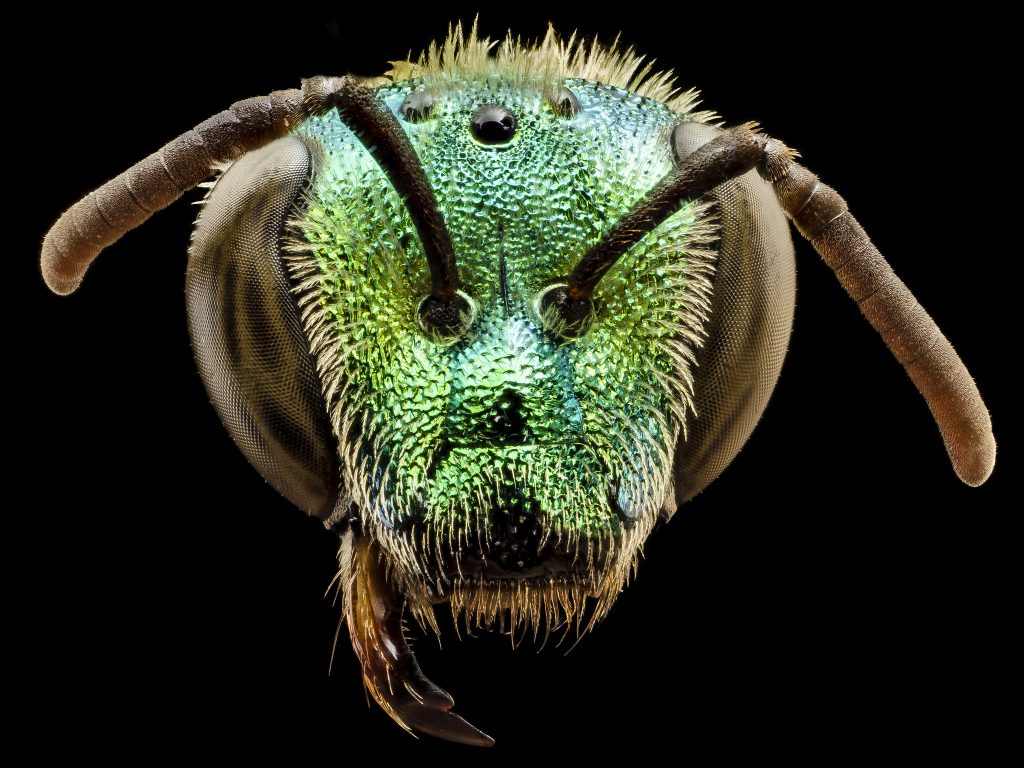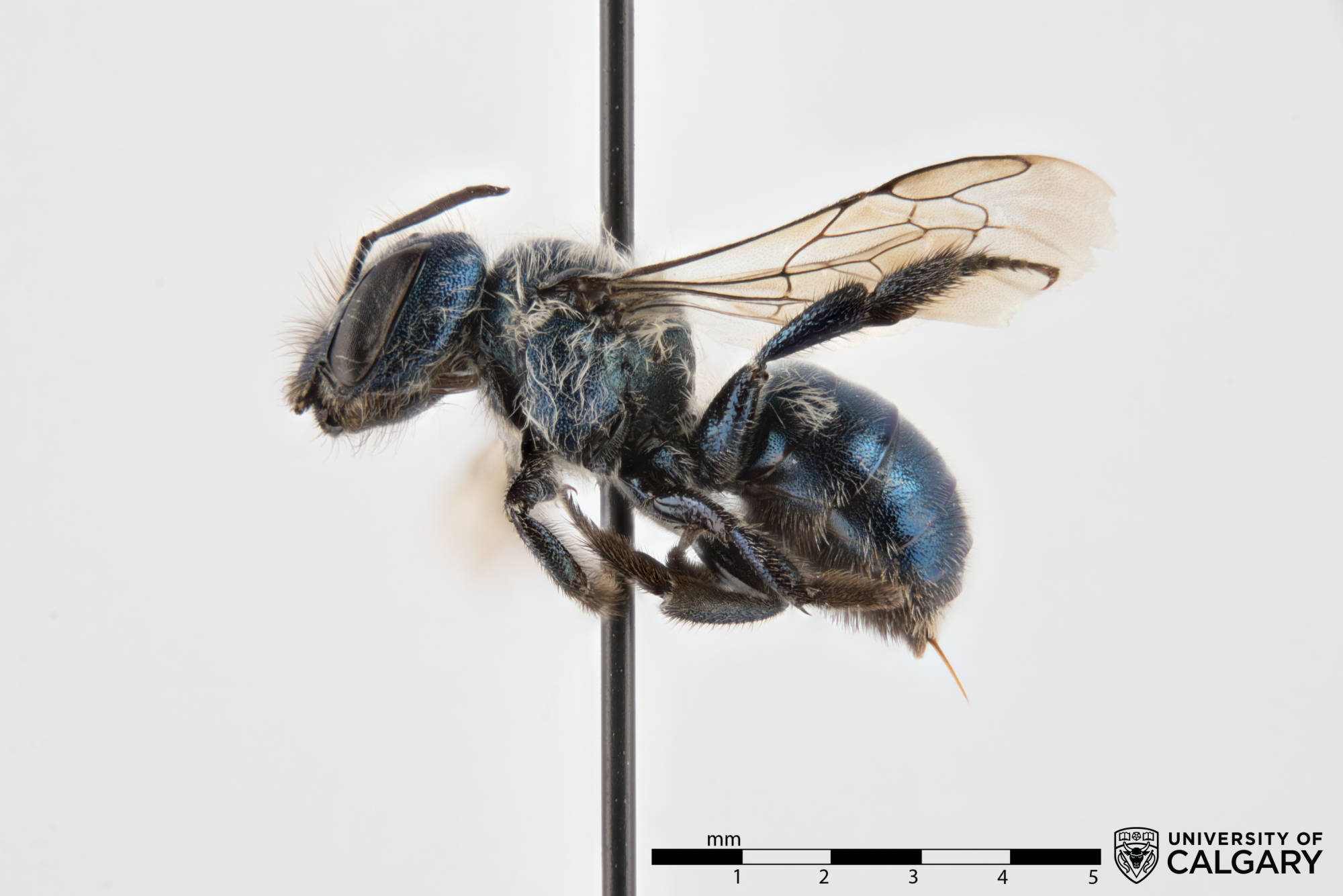Functions
Modify Physical State – Colour
There are two main ways an animal can get its colouration. An animal can produce its colour directly using pigments, or it can use tiny microstructures or nanostructures to scatter light into different wavelengths and produce structural colour. Pigment colour will always look the same, but structural colour often manifests as an iridescent colour that changes hue as you look at it from different angles.1 Adding compounds that disrupt the structures, like water or alcohol, will cause the animal’s colour to lose its sheen, but the effect is reversed when the compound is removed.2
Many bees from the Osmia genus, such as Osmia melanosmia (above) from the University of Calgary Invertebrate Collection, have a brilliant iridescent blue shine. The wings of Malaysian carpenter bees have a brilliant purple and green colour, while sweat bees can also exhibit a blue sheen. All of these colours are caused not by pigments in the body, but by structures that cause light scattering. The wings of the Malaysian carpenter bee have three distinct layers, each with unique structures patterning them. Parts of the wing that shine purple and blue have distinctly different structures, but the functions of these structures are still unknown.3
Bright colours could be used as a mating signal and are often in species with strong sexual dimorphism. Studies also suggest that bright, flashy signals with iridescent colours may confuse predators. Colour interferes with the ability to recognize shapes, which may impair a predators ability to distinguish its prey as food.4

The head of a female Agapostemon splendens from the USGS Bee Inventory and Monitoring Lab. Notice the iridescence of the blues, changing from bright, vivid blue at the top of the head to a yellowish green along the sides. This iridescence is a tell tale sign that the color is created by light scattering nanostructures and microstructures.
Some of the stunning images on this page are courtesy of Sam Droege and the USGS Bee Inventory and Monitoring Lab, which develops identification tools and surveys for native bees.
This page was created by Holly Kerstiens in collaboration with Dr. Mindi Summers, Dr. Marjan Eggermont, Dr. Jess Vickruck, Lincoln Best and Dr. Alex Ralevski as part of an independent studies project in winter 2019. This information is also available as a collection on AskNature.org.
Sources
1 Structural Coloration in Nature
RSC Advances. 2013.
Sun, J., Bhushan, B. & Tong J.
2 Animals Cannot Be Blue
National Geographic. 2007.
https://www.youtube.com/watch?v=KN7krvnm2uM
3 Structural coloration of the malaysian carpenter bee wing
AIP Conference Proceedings. 2010.
Matin, T., Mk, L., Majlis, B.Y. & Gebeshuber I.C.
4 Iridescence impairs object recognition in bumblebees
Nature. 2018.
Kjernsmo, K., Hall, J.R., Doyle C., Khuzayim, N., Cuthill, I.C., Scott-Samuel, N.E. & Whitney, H.M.
